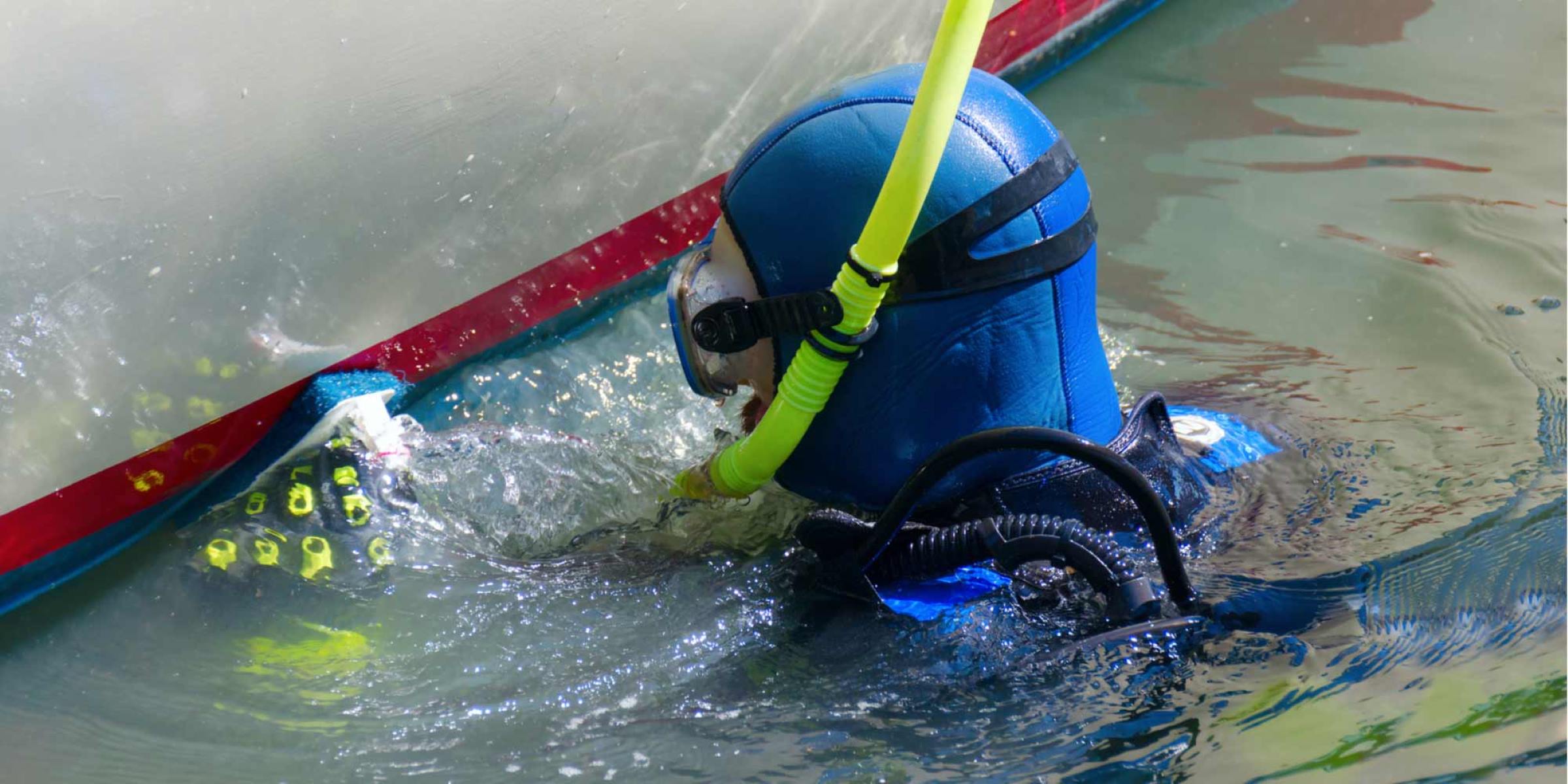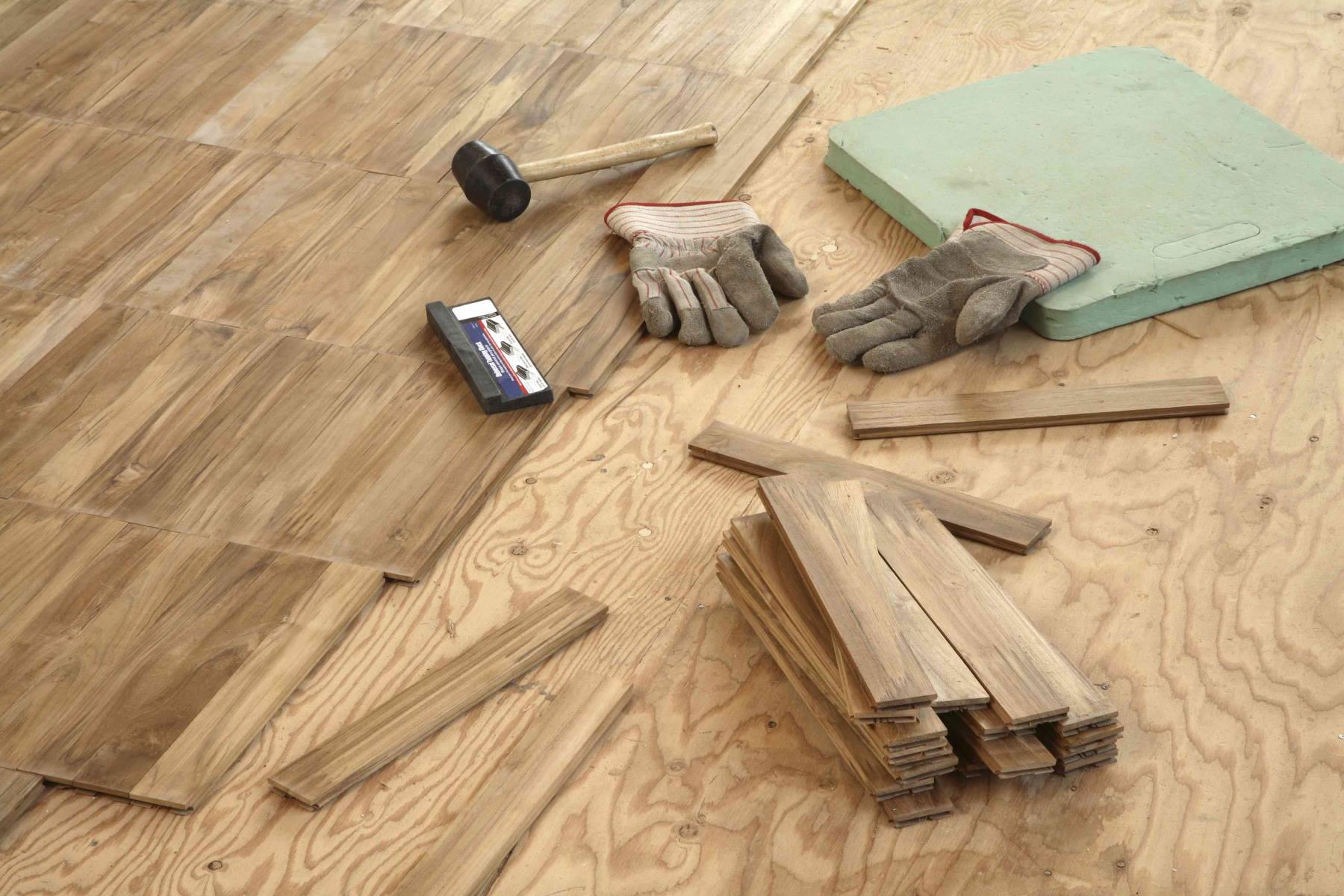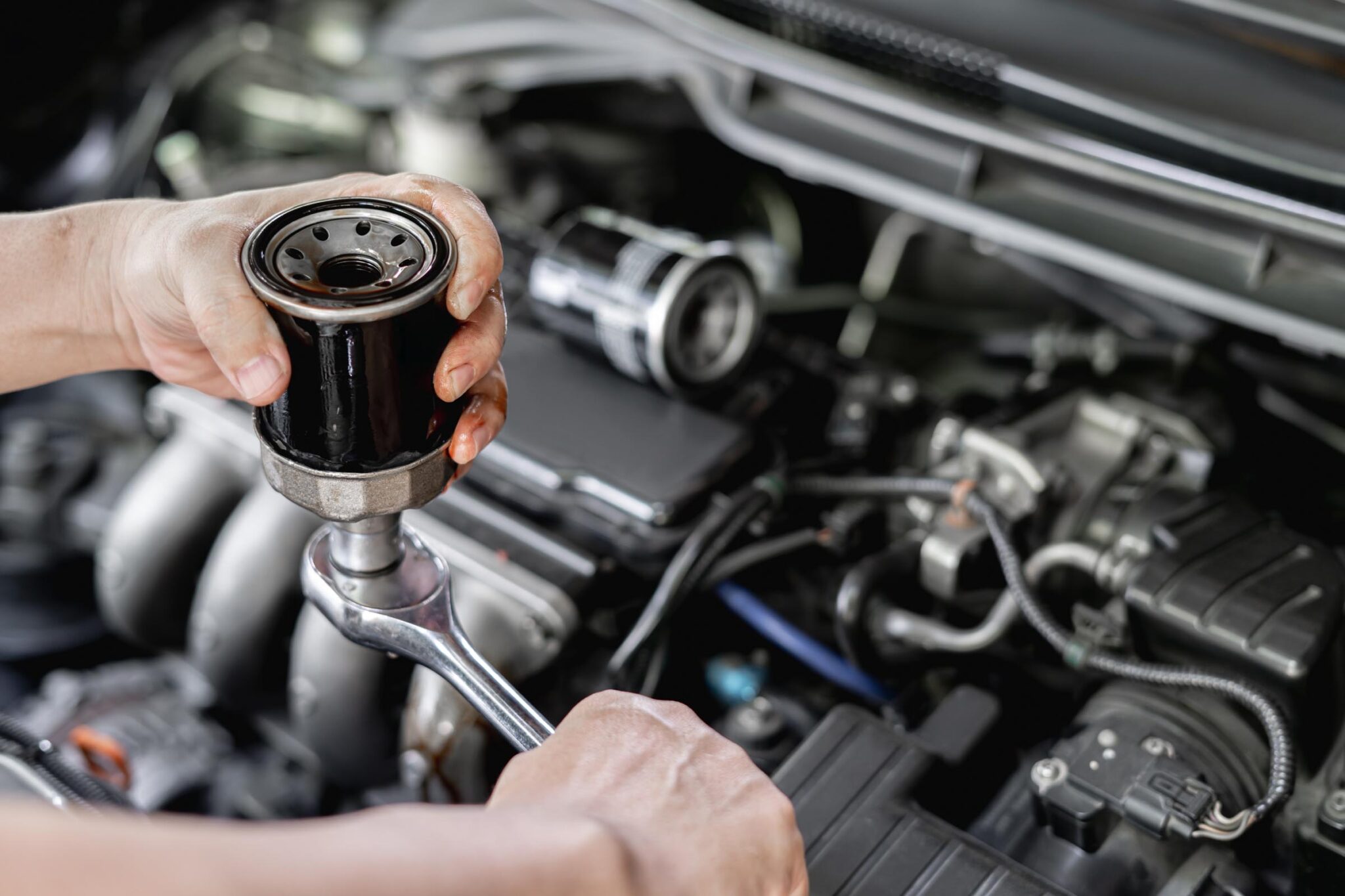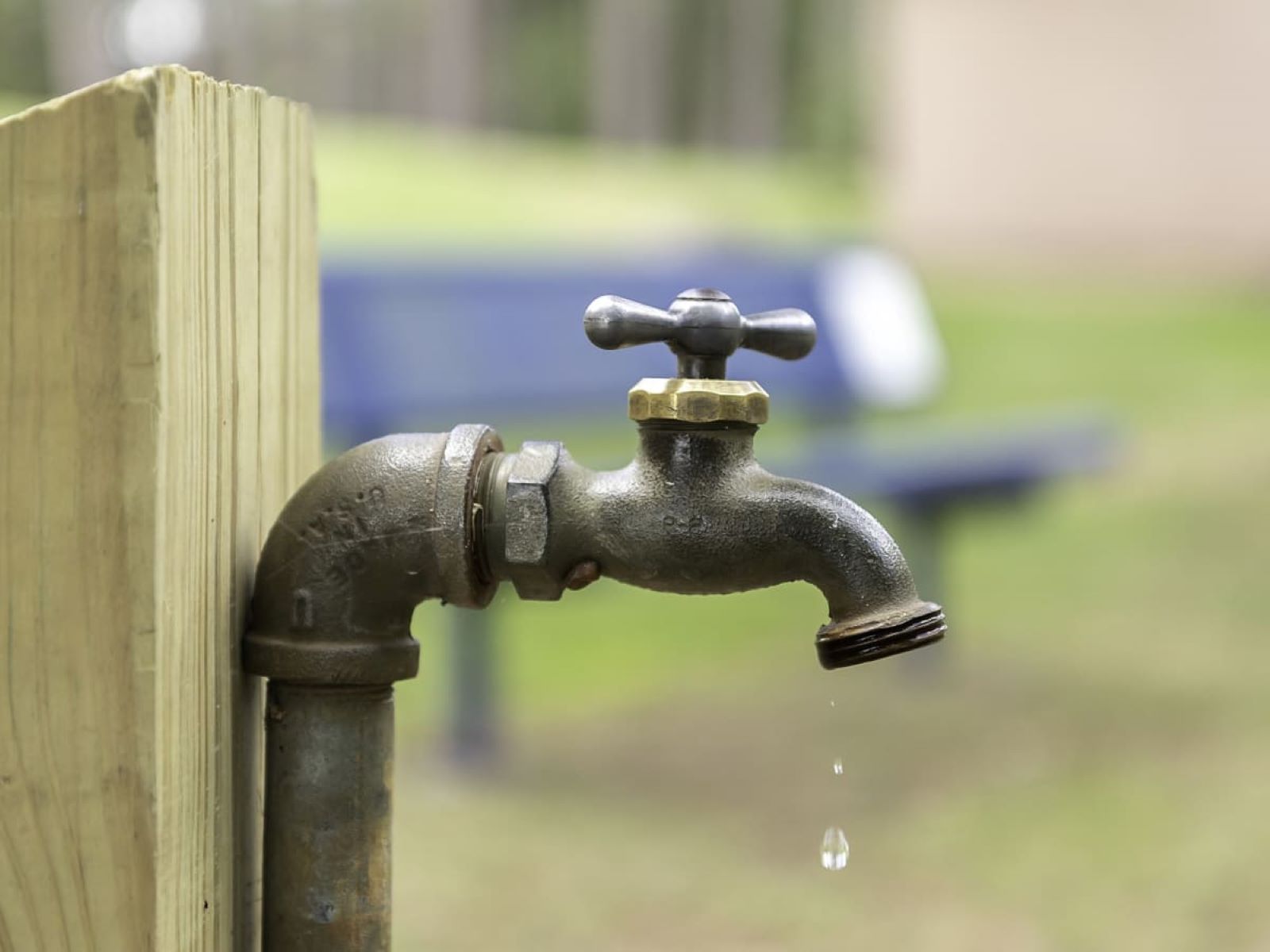Home>Home and Garden>The Ultimate Guide To Cleaning Your Driveway Culvert
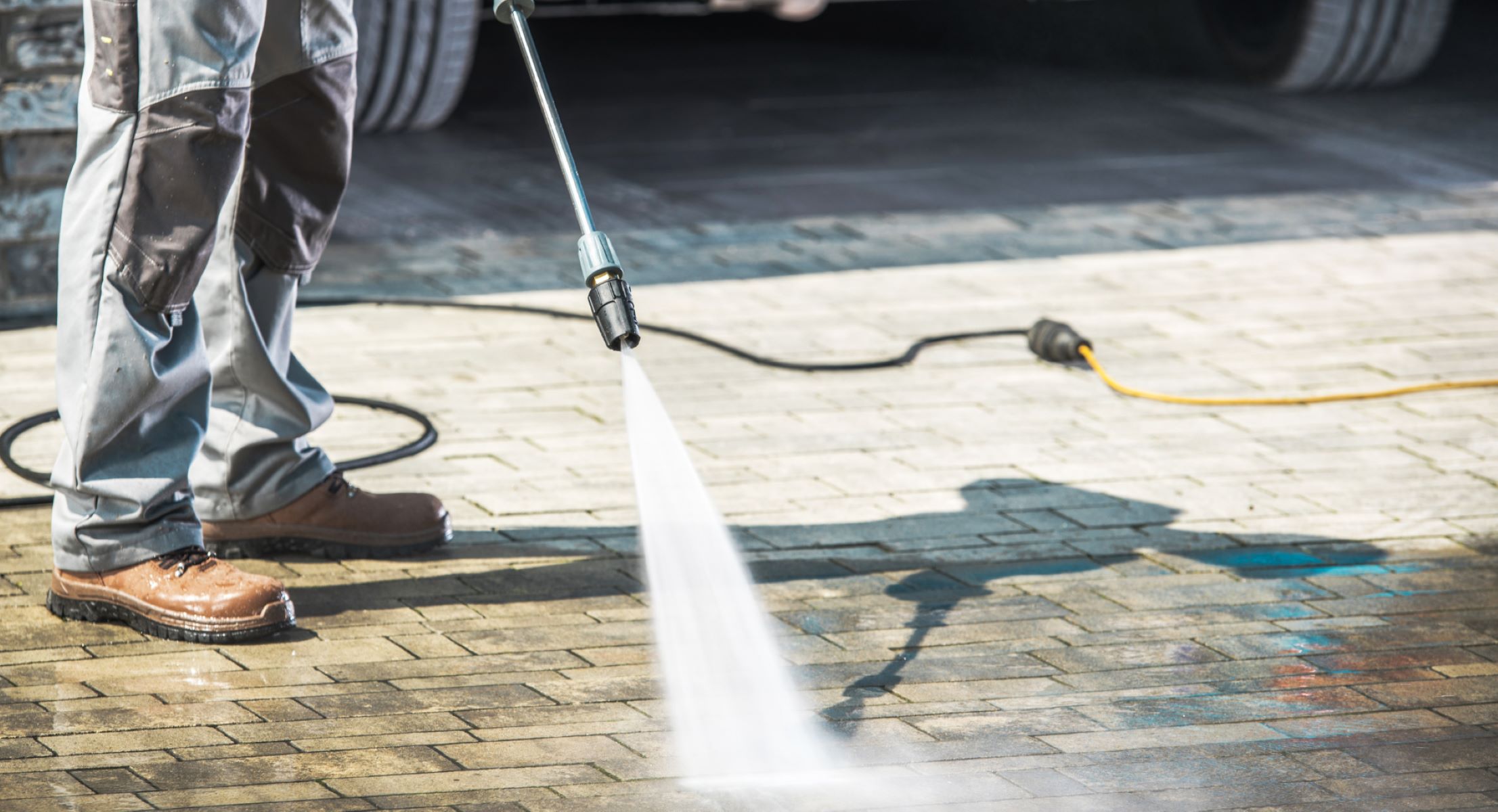

Home and Garden
The Ultimate Guide To Cleaning Your Driveway Culvert
Published: January 17, 2024
Discover the best techniques for cleaning your driveway culvert in this comprehensive guide. Keep your home and garden looking pristine with these expert tips.
(Many of the links in this article redirect to a specific reviewed product. Your purchase of these products through affiliate links helps to generate commission for Regretless.com, at no extra cost. Learn more)
Table of Contents
Introduction
Your driveway culvert plays a crucial role in maintaining the integrity and functionality of your property. It serves as a conduit for water to flow beneath your driveway, preventing erosion and water damage. However, over time, culverts can become clogged with debris, leading to blockages that impede water flow and compromise the stability of your driveway.
Proper maintenance of your driveway culvert is essential to ensure that it continues to effectively channel water away from your property. With the right knowledge and tools, you can easily clean and maintain your culvert, preserving the longevity of your driveway and preventing costly repairs.
In this comprehensive guide, we will walk you through the process of cleaning and maintaining your driveway culvert, providing you with the essential information and step-by-step instructions to keep your culvert in optimal condition. From understanding the anatomy of your culvert to implementing safety precautions and performing regular maintenance, this guide will equip you with the knowledge and skills to effectively care for this vital component of your property.
By following the techniques outlined in this guide, you can safeguard your driveway culvert against blockages and deterioration, ensuring that it continues to function efficiently for years to come. So, let's delve into the world of driveway culvert maintenance and empower you to take charge of preserving the integrity of your property.
Understanding Your Driveway Culvert
Your driveway culvert is a vital component of your property's drainage system. It consists of a pipe or structure that allows water to flow beneath your driveway, preventing water buildup and potential damage. Culverts are designed to effectively manage the flow of water, diverting it away from your driveway and surrounding areas.
Driveway culverts come in various shapes and sizes, depending on the specific requirements of your property. Common materials used for culverts include concrete, metal, and plastic, with each offering unique advantages in terms of durability and longevity. Understanding the type and dimensions of your culvert is essential for effective maintenance and cleaning.
The positioning of your driveway culvert is also crucial. It is typically located at the lowest point of your driveway to facilitate the natural flow of water. By allowing water to pass beneath the driveway, culverts prevent erosion and water accumulation, safeguarding the structural integrity of the driveway.
Furthermore, understanding the slope and angle of your culvert is important for ensuring proper water drainage. The angle at which the culvert is installed influences the speed and efficiency of water flow, preventing stagnation and potential blockages.
By gaining a comprehensive understanding of your driveway culvert, including its materials, dimensions, and positioning, you can effectively assess its maintenance needs and implement appropriate cleaning and maintenance techniques to preserve its functionality.
In the following sections, we will delve into the essential steps and precautions for maintaining and cleaning your driveway culvert, empowering you to proactively care for this integral part of your property's drainage system.
Safety Precautions
Before embarking on any maintenance or cleaning activities related to your driveway culvert, it is imperative to prioritize safety. By adhering to essential precautions, you can mitigate potential risks and ensure a secure environment for carrying out the necessary tasks. Here are the key safety measures to consider:
-
Assess the Surrounding Area: Before initiating any work on your driveway culvert, carefully inspect the surrounding area. Look out for any potential hazards such as uneven terrain, slippery surfaces, or nearby obstructions. Clear the work area of any debris or obstacles to create a safe and accessible space for maintenance activities.
-
Wear Protective Gear: When working on your driveway culvert, it is essential to wear appropriate protective gear. This includes sturdy gloves to protect your hands from sharp edges or debris, safety goggles to shield your eyes from potential splashes or particles, and durable footwear with good traction to prevent slips and falls.
-
Secure the Work Area: To prevent accidents and ensure a secure working environment, it is advisable to cordon off the work area if possible. Use caution tape or barriers to demarcate the space and alert others to the ongoing maintenance activities. This helps minimize the risk of unauthorized access and ensures the safety of everyone involved.
-
Be Mindful of Traffic: If your driveway culvert is situated near a roadway or thoroughfare, exercise caution when working in close proximity to traffic. Stay vigilant and be mindful of passing vehicles, ensuring that you are visible to drivers and maintaining a safe distance from the road.
-
Use Proper Tools and Equipment: Utilize the appropriate tools and equipment for the task at hand. Ensure that all tools are in good working condition and suitable for the maintenance activities. This includes using sturdy shovels, rakes, and a high-pressure water hose for clearing debris and blockages.
-
Beware of Wildlife: Depending on your location, be mindful of potential encounters with wildlife, such as snakes or rodents, when working near culverts. Take precautions to minimize the risk of unexpected wildlife interactions by making noise and being attentive to your surroundings.
By prioritizing safety and adhering to these precautions, you can create a secure environment for maintaining and cleaning your driveway culvert. These measures not only safeguard your well-being but also contribute to the successful execution of maintenance tasks, ensuring the longevity and functionality of your culvert.
Tools and Materials
When it comes to cleaning and maintaining your driveway culvert, having the right tools and materials at your disposal is essential for ensuring effective and efficient results. By equipping yourself with the following items, you can tackle debris removal, blockage clearing, and overall culvert maintenance with confidence and precision.
Shovel: A sturdy shovel is indispensable for removing accumulated debris such as leaves, branches, and sediment from the entrance and interior of the culvert. Opt for a durable, long-handled shovel to facilitate thorough cleaning and reach into the culvert for comprehensive debris removal.
Rake: A rake with sturdy tines is ideal for clearing surface debris and vegetation that may obstruct the flow of water into the culvert. Use the rake to gather and remove leaves, twigs, and other organic matter that could impede the proper functioning of the culvert.
High-Pressure Water Hose: A high-pressure water hose is a valuable tool for dislodging stubborn debris and clearing minor blockages within the culvert. The force of the water can help flush out accumulated sediment and ensure unobstructed water flow through the culvert.
Safety Gloves: Durable, protective gloves are essential for safeguarding your hands during the cleaning process. Choose gloves that offer a good grip and protection against sharp edges or abrasive materials, allowing you to work confidently and comfortably.
Safety Goggles: Protecting your eyes from potential splashes, debris, or water spray is crucial when working on culvert maintenance. Wear safety goggles to shield your eyes from any particles or water dislodged during the cleaning process.
Sturdy Boots: Ensure that you wear sturdy, non-slip boots with good traction to provide stability and protection while working in the vicinity of the culvert. Proper footwear minimizes the risk of slips and falls, especially when navigating uneven terrain or wet surfaces.
Debris Container: Having a designated container for collecting the removed debris is essential for maintaining a tidy work area and facilitating proper disposal. Use a durable, large container to gather and contain the debris, making it easier to transport and dispose of the accumulated waste.
Cleaning Solution (Optional): Depending on the condition of the culvert and the type of debris present, a mild cleaning solution may be beneficial for enhancing the cleaning process. Consider using a gentle, environmentally friendly solution to aid in removing stubborn residue and maintaining the culvert's cleanliness.
By ensuring that you have these essential tools and materials on hand, you can approach the maintenance and cleaning of your driveway culvert with confidence and efficiency. With the right equipment at your disposal, you are well-prepared to preserve the functionality and longevity of your culvert, safeguarding its vital role in your property's drainage system.
Clearing Debris
Clearing debris from your driveway culvert is a critical step in maintaining its functionality and preventing potential blockages. Debris such as leaves, branches, silt, and other organic matter can accumulate within the culvert, impeding the flow of water and compromising its effectiveness. To ensure unobstructed water passage and optimal drainage, thorough debris removal is essential.
Begin by inspecting the entrance and interior of the culvert for any visible debris. Use a sturdy shovel to carefully remove larger objects and accumulated sediment from the culvert's entrance. Clearing the immediate vicinity of the culvert ensures unobstructed access for further cleaning and maintenance activities.
Next, utilize a rake to gather and remove surface debris and vegetation that may obstruct the flow of water into the culvert. Clearing the area surrounding the culvert helps prevent potential blockages and ensures that water can freely enter the culvert without encountering obstacles.
For comprehensive debris removal, it is essential to reach into the culvert to clear any accumulated material. Use a long-handled shovel to carefully scoop out debris from the interior of the culvert, ensuring that it is free from any obstructions that could impede water flow.
Once the visible debris has been cleared, consider using a high-pressure water hose to flush out any remaining sediment and ensure thorough cleaning. The force of the water can dislodge stubborn debris and help maintain the culvert's internal cleanliness, promoting unimpeded water flow.
Throughout the debris clearing process, prioritize safety by wearing protective gloves and ensuring stable footing to prevent slips and falls. Collect the removed debris in a designated container for proper disposal, maintaining a tidy work area and facilitating efficient cleanup.
By diligently clearing debris from your driveway culvert, you can effectively maintain its functionality and prevent potential blockages. This proactive approach to debris removal contributes to the longevity and efficiency of your culvert, ensuring that it continues to effectively channel water away from your property without impediments.
Removing Blockages
Removing blockages from your driveway culvert is a crucial aspect of its maintenance, ensuring unobstructed water flow and preventing potential drainage issues. Blockages can occur due to various factors, including accumulated debris, sediment buildup, or even the intrusion of roots or soil into the culvert. Addressing blockages promptly is essential for preserving the functionality and effectiveness of your culvert.
To begin the process of removing blockages, carefully inspect the culvert for any signs of obstruction. This may include visible debris, standing water, or reduced water flow through the culvert. Identifying the nature and location of the blockage is vital for determining the most effective approach to clearing it.
For minor blockages caused by debris or sediment, a high-pressure water hose can be a valuable tool for dislodging the obstruction. Direct the force of the water into the culvert, aiming to flush out the accumulated material and restore unimpeded water flow. Exercise caution to avoid dislodging the blockage in a manner that could cause it to create a further obstruction downstream.
In cases where the blockage is more substantial or resistant to water flushing, manual intervention may be necessary. Utilize a sturdy shovel or a specialized culvert cleaning tool to carefully dislodge and remove the obstructing material. Take care to work methodically and avoid causing damage to the culvert structure during the removal process.
If the blockage is attributed to the intrusion of roots or soil into the culvert, a more comprehensive approach may be required. Consider using a root auger or a drain snake to penetrate and clear the obstructed area, allowing for the restoration of unobstructed water flow. Exercise patience and diligence when addressing root or soil blockages, as these may require persistent efforts to fully clear.
Throughout the blockage removal process, prioritize safety by wearing protective gear and maintaining stability on potentially slippery surfaces. Be mindful of the force and direction of water flow when using a high-pressure hose, ensuring that it does not cause unintended damage to the culvert or surrounding area.
By effectively removing blockages from your driveway culvert, you can uphold its functionality and prevent potential drainage issues. This proactive approach to blockage removal contributes to the long-term integrity of your culvert, ensuring that it continues to efficiently channel water away from your property without impediments.
Flushing the Culvert
Flushing the culvert is a crucial step in maintaining optimal water flow and preventing potential blockages. This process involves using a high-pressure water hose to dislodge accumulated debris, sediment, and other obstructions within the culvert, ensuring that water can freely pass through without encountering impediments.
To begin the flushing process, carefully position the high-pressure water hose at the entrance of the culvert. It is essential to direct the water flow into the culvert, aiming to dislodge any debris or sediment that may be obstructing the passage of water. The force of the water can effectively clear minor blockages and promote unimpeded water flow through the culvert.
As the water flows into the culvert, observe the outflow on the opposite end to ensure that water is freely passing through. This visual confirmation indicates the effectiveness of the flushing process and helps identify any persistent blockages that may require further attention.
In cases where the culvert is significantly obstructed or clogged, adjusting the water pressure and angle of the hose can aid in dislodging stubborn debris. By varying the direction and intensity of the water flow, you can target specific areas within the culvert to ensure comprehensive cleaning and blockage removal.
Throughout the flushing process, exercise caution to avoid dislodging debris in a manner that could cause it to create a further obstruction downstream. It is important to work methodically and systematically, allowing the force of the water to gradually clear the culvert without causing unintended consequences.
After completing the initial flushing, assess the interior of the culvert for any remaining debris or signs of blockage. If necessary, repeat the flushing process to ensure thorough cleaning and unimpeded water flow. Clearing the culvert of any lingering debris contributes to its long-term functionality and prevents potential drainage issues.
By diligently flushing the culvert, you can effectively maintain its integrity and ensure optimal water flow. This proactive approach to culvert maintenance contributes to the longevity and efficiency of your property's drainage system, safeguarding it against blockages and potential damage.
Maintaining Your Driveway Culvert
Regular maintenance is essential for preserving the functionality and longevity of your driveway culvert. By implementing proactive measures, you can ensure that the culvert continues to effectively channel water away from your property without encountering blockages or issues. Here are key maintenance practices to uphold the integrity of your driveway culvert:
Inspections: Conduct periodic inspections of your culvert to assess its condition and identify any signs of deterioration or blockages. Check for visible debris, sediment buildup, or structural damage that may impede water flow. By identifying potential issues early, you can address them promptly and prevent more extensive damage.
Clear Surrounding Vegetation: Maintain the area surrounding the culvert by regularly clearing vegetation, such as grass, weeds, and overhanging branches. Vegetation can obstruct water flow and contribute to debris accumulation, potentially leading to blockages. Keeping the surroundings clear facilitates unimpeded water passage through the culvert.
Seasonal Cleaning: Schedule seasonal cleaning sessions to remove accumulated debris and sediment from the culvert. During fall, be vigilant about clearing fallen leaves, and in spring, focus on addressing any debris brought by seasonal rains. Regular cleaning prevents the buildup of material that could hinder water flow and compromise the culvert's effectiveness.
Monitor Water Flow: Keep an eye on the water flow through the culvert, especially during heavy rain or periods of increased runoff. Observe the drainage patterns and ensure that water is efficiently passing through the culvert without backing up or causing standing water. Any irregularities in water flow should prompt a thorough inspection and potential maintenance actions.
Address Erosion: Monitor the surrounding areas for signs of erosion near the culvert. Erosion can compromise the stability of the culvert and surrounding soil, potentially leading to structural issues. Implement erosion control measures as needed to maintain the integrity of the culvert's installation and prevent further damage.
Professional Maintenance: Consider enlisting the expertise of professionals for comprehensive culvert maintenance, especially for more complex tasks such as structural assessments, repair, or extensive blockage removal. Professional maintenance ensures that the culvert receives thorough care and attention, contributing to its long-term functionality.
By integrating these maintenance practices into your property care routine, you can effectively preserve the integrity and functionality of your driveway culvert. Regular inspections, cleaning, and proactive measures contribute to the longevity of the culvert, ensuring that it continues to efficiently manage water flow and protect your property from potential drainage issues.
Conclusion
In conclusion, maintaining your driveway culvert is essential for preserving the integrity of your property's drainage system and preventing potential issues related to water accumulation and erosion. By understanding the anatomy of your culvert, implementing safety precautions, and utilizing the appropriate tools and materials, you can effectively clean and maintain this vital component of your property.
Clearing debris and removing blockages are crucial steps in ensuring unimpeded water flow through the culvert. By diligently clearing accumulated debris and addressing blockages, you can prevent potential drainage issues and preserve the functionality of the culvert.
Flushing the culvert with a high-pressure water hose further enhances its cleanliness and promotes optimal water flow. This process dislodges stubborn debris and sediment, contributing to the long-term efficiency of the culvert in managing water runoff.
Moreover, regular maintenance practices, including inspections, clearing surrounding vegetation, and addressing erosion, are integral to upholding the integrity of the culvert. By integrating these maintenance measures into your property care routine, you can proactively safeguard the culvert against potential blockages and structural issues.
In essence, the proper maintenance and cleaning of your driveway culvert not only protect your property from water-related damage but also contribute to the overall longevity of your driveway. By investing time and effort into caring for this essential drainage component, you ensure that it continues to serve its purpose effectively, preserving the stability and functionality of your property for years to come.
Taking a proactive approach to culvert maintenance empowers you to address potential issues early, preventing costly repairs and mitigating the risk of water damage to your driveway and surrounding areas. By following the comprehensive guide outlined in this article, you are equipped with the knowledge and techniques to maintain and clean your driveway culvert effectively, ensuring its continued functionality and longevity.
